Baseball History Comes Alive Now Ranked #2 by Feedspot Among All Internet Baseball History Websites and Blogs!
Guest Submissions from Our Readers Always Welcome!
Subscribe to Baseball History Comes Alive for automatic updates (sign-up block found in right side-bar)
As a Free Bonus for subscribing, you’ll get instant access to my two Special Reports: Memorable World Series Moments and Gary’s Handy Dandy World Series Reference Guide!
The Sym-Phony Band Photo Gallery
Click on any image below to see photos in full size and to start Photo Gallery:
Another in the Series: Baseball’s Characters and Eccentrics
Let’s Remember the Brooklyn Dodgers’ “Sym-Phony” Band!
“Sometimes the band sounds like a herd of elephants with whooping cough,” -Murray Schumach. New York Times, 1947
Our recent post about the Mets’ “Sign Man” got me thinking about other baseball notable eccentrics from days gone by. I didn’t have to think long before the Brooklyn “Sym-Phony” band came to my mind.
What exactly was it about the game we all love that it was able to inspire such unique creations? Of course, we weren’t around to actually hear them play their unique renditions of ditties and start-up chants. The above quote provides us with an apt description of the cacophony of sounds that emanated from their crude, often homemade, instruments.
While not putting out music that would make anyone forget Toscanini or the New York Philharmonic, Brooklyn’s beloved little ensemble was a staple of Ebbets Field from 1937 until the Bums departed for greener pastures in 1957. From their original home in Section 8 behind the Dodgers’ dugout, affectionately known as the “loco” section, the wacky little band eventually ventured out and soon could be found parading around the environs of Ebbets Field – even walking atop the dugouts – serenading fans and players alike with their folky, off-key repertoire of familiar songs. Visiting players were not off-limits for their good-natured musical taunts, and they even had some special tunes saved for the umpires.
In the featured photo, we see Dodger players Spider Jorgensen and Bobby Bragan along with original band members Jerry Martin, snare drum, Brother Lou Soriano, trombone, Phil Caravalle, trumpet, Paddy Palma, base drum, JoJo Delio, cymbals, from 1947.
It all began rather spontaneously with a local Brooklynite named Carmine “Shorty” Laurice. A wielder by trade, Shorty was a loyal Dodger fan who for years could be found bouncing around in his seat behind the Dodgers’ dugout. An Ebbets Field fixture, Shorty was easily spotted with his silk hat, frock coat, and orange pantaloons. He was also in constant motion, usually doing his characteristic jitterbug.
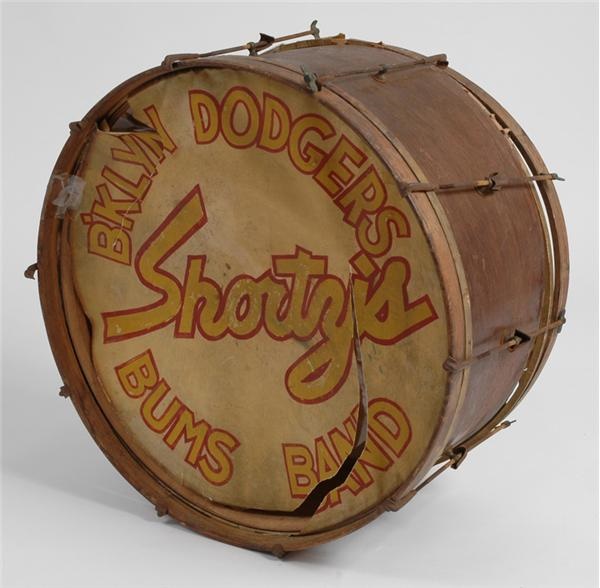
Spoken in pure Brooklynese, here’s Shorty’s version of how the band came into existence:
“Back in ’37 I’m sittin’ in my seat at Ebbets Field — the same seat I got for twenty-eight years, Section 8, Row 12, on the aisle — and I’m whistlin’ through my megaphone likes I always do, when I runs into this other guy, a drummer. And that’s the beginin’ of the band. It don’t take much to start things up in that Section 8 at the ball park, you know. Pretty soon I got myself a band.”
One thing led to another, and soon a few other guys from some of the nearby blue-collar Brooklyn neighborhoods like Williamsburg and Greenpoint heard about what Shorty was up to and wanted to get in. They were soon sneaking instruments into the park—and making a lot of loud noises.
Much to their surprise, in a weird but entertaining sort of way (something that could only happen at Ebbets Field), they discovered that the fan response was positive. While half expecting to get thrown out of the park, they decided to keep their little comic “schtick” going. And, from this rather inauspicious beginning, the band was born.
Member Danny Wilson recounted the early days of the band:
“That first year, Dodgers management did not want us at the ballpark. They felt we were a nuisance, but the players and the fans loved us, so we had to sneak into the ballpark. One guy paid the admission fee and lowered a rope over the side of the stadium, and we tied our instruments to the rope and had them hoisted up. Then we ran into the stands and started playing.”
Originally simply called the “Brooklyn Dodgers Band,” they were soon christened by radio broadcast legend Red Barber with the witty but appropriate sobriquet, “Sym-PHONY.” And, sure enough, in typical Brooklyn fashion, the name caught on.
Rob Edelman wrote in his SABR essay:
“Away from Ebbets Field, the Sym-Phony members, who changed across the years, toiled as truck drivers, clerks, and city workers of various stripes…Their instruments included everything from snare drums, bass drums, and metal containers posing as drums to cymbals, bugles, trumpets, trombones, and washboards employed as noisemakers.”
Besides Shorty Laurice, six other musicians made up the most recognizable members of the band in its early years: Drummer “Brother” Lou Soriano, a driver for the military on Governor’s Island; truck driver Phil Mason on trumpet; subway maintenance man and clarinetist Bob Sharkey; beer distributor and bass drummer Patsy Palma; paper cutter and trombonist Pete Norman; beer distributor Jo Jo Delio on the cymbals; and the little grocer—all forty pounds of him— bass drummer Patsy Palma, who Laurice would toss around like a rag doll in routines.
Eventually, ten “musicians” made up the band, with guys rotating in-and-out to accommodate the time of games and day or night work schedules. After Branch Rickey took over the Dodgers, he soon realized the popularity of the band and granted the members free admission and special seating in Section 8.
The umpires were an easy target for the band. Whenever the “men in blue” made their appearance on the field, the band had a special song saved just for them. Not all the umpires were amused, as umpire Beans Readon recalled from 1949:
“The Brooklyn Sym-Phony used to be the worst for us — they would always play ‘The Three Blind Mice’ when we’d walk out on the field. And that would eat up a feller like umpire Babe Pinelli. I said to the Babe to just ignore ’em, and he did and they stopped after a while. The fans like you to growl back at ’em.”
Over time, the band became an institution for the Brooklyn fans. The team even held a “Shorty Laurice Day” on August 21, 1948 to honor the wacky band’s founder. Tragically, Shorty passed away at age 43 the following November after complications from ulcer surgery. On Opening Day the next spring, the Dodgers honored his memory by dedicating a plaque on his seat in Section 8.
Hundreds of Brooklynites attended Shorty’s funeral, with an outpouring of affection for someone who had meant so much to them and their beloved team. Attendees included Brooklyn fans, Dodger players, and front office personnel, including Roy Campanella, Jackie Robinson, and owner Walter O’Malley. Leadership then passed on to another of the band’s originals, drummer Lou Soriano.
The band continued to evolve into the 1950s with new, second-generation members joining to replace those who had passed on. As popular as ever, it now included Lou Soriano’s son Armand, and even a high-school student named William “Cally” Califano on tenor sax.
The end came in 1957 when the heart of Brooklyn was cut out. Fans bid a sad farewell to their beloved Dodgers as they set sail for Los Angeles. The move also sounded the death toll for this original Brooklyn institution as a ball park attraction.
Over the years, the band stayed together and was in demand for appearances at parades, store openings, banquets, and Old-Timers’ games. One-by-one members passed away until, in 2015, Newsday reported that the last surviving member of the band had died: 87-year-old Armand Suriano.
In 2007, at a reunion on the 50th anniversary of the Dodgers’ move to Los Angles, Jackie Robinson’s widow, Rachel Robinson, recalled the Sym-Phony band with affection:
“The Sym-Phony was one of the things people loved about Ebbets Field. They provided a kind of special character and loving warmth that few other ballparks had, so I’d recognize them anywhere.”
So let’s shine our nostalgic baseball spotlight on one of the game’s most unique and beloved creations, something that we’ll never see the like of again:
Brooklyn’s “Sym-Phony” Band!
Gary Livacari
Check out my latest book, recently nominated for the SABR 2020 Lawrence Ritter award: Reflections On the 1919 Black Sox: Time to Take Another Look now available on Amazon in e-book and paperback. All profits go to the Illinois Veterans Foundation
Add your name to the petition to help get Gil Hodges elected to the Hall of Fame (with voting now postponed until December 2021): https://wp.me/P7a04E-57h
We are a participant in the Amazon Services LLC Associates Program, an affiliate advertising program designed to provide a means for us to earn fees by linking to Amazon.com and affiliated sites. Click here to view Amazon’s privacy policy
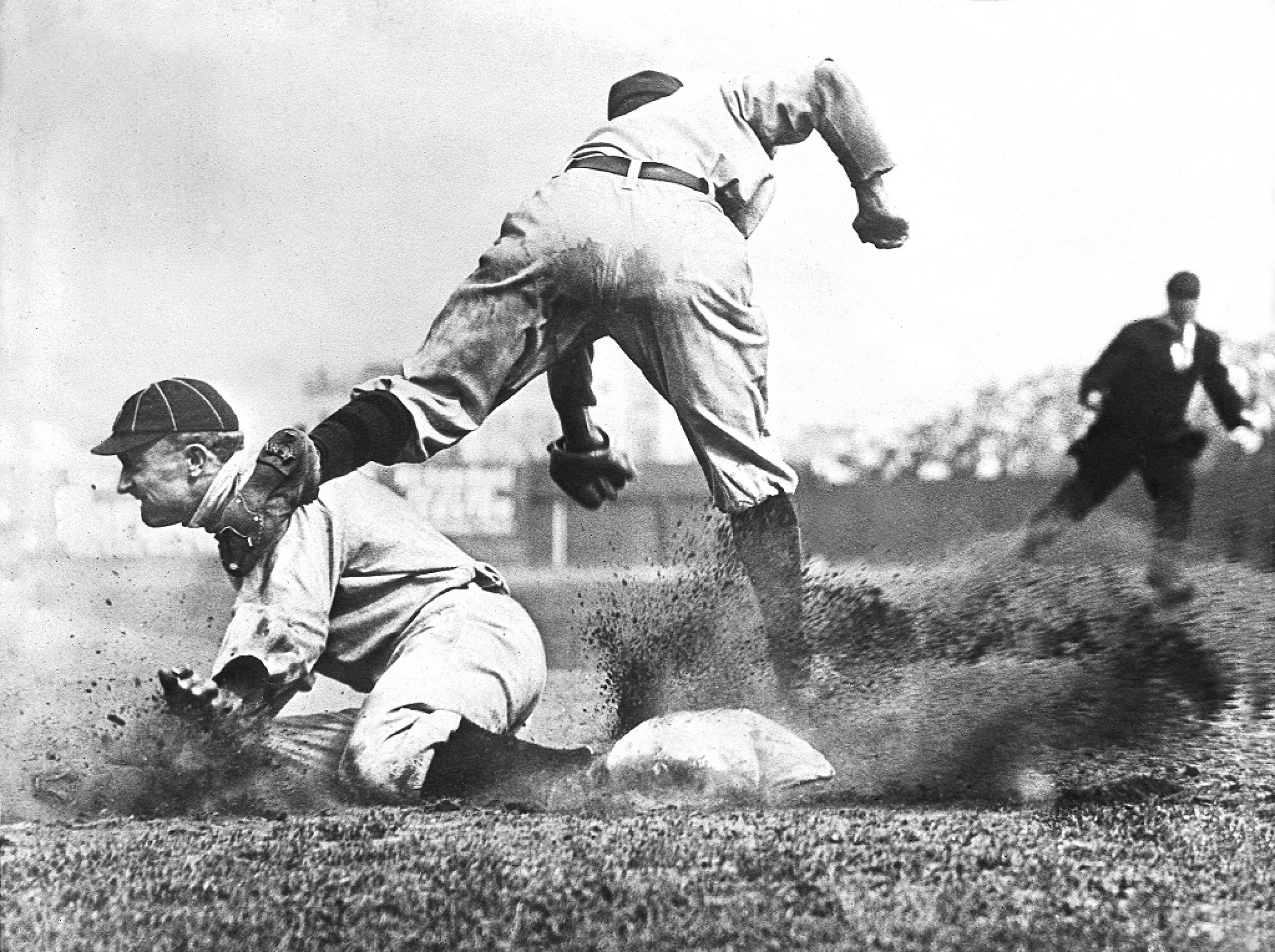
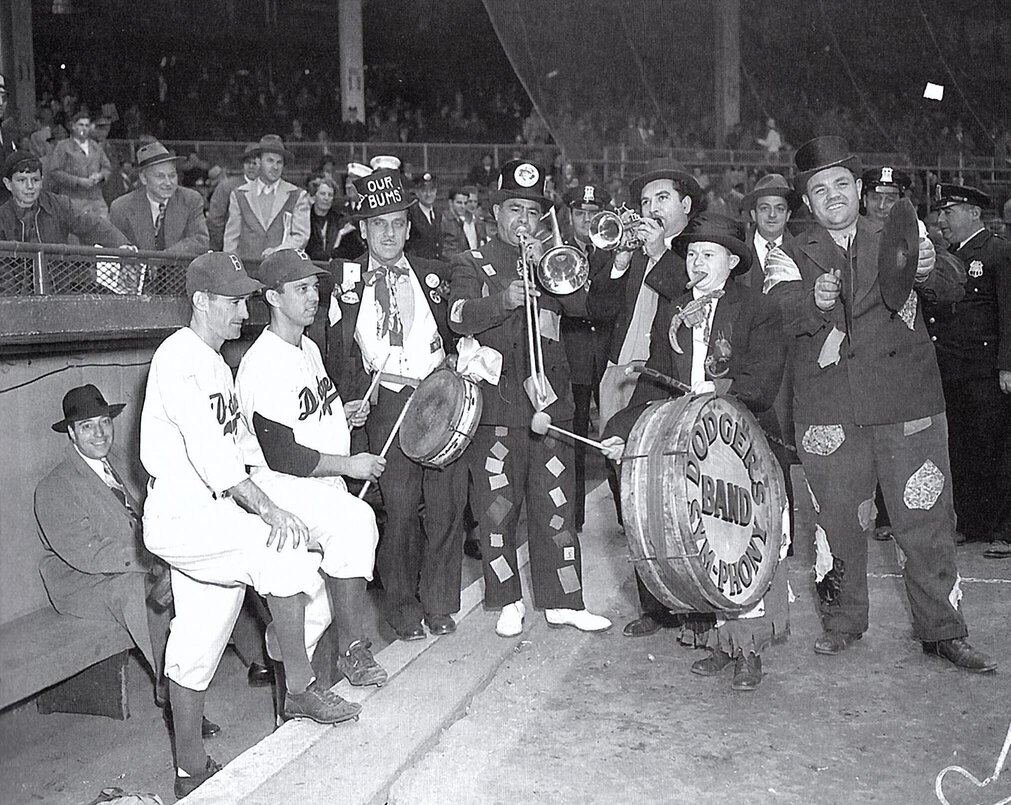
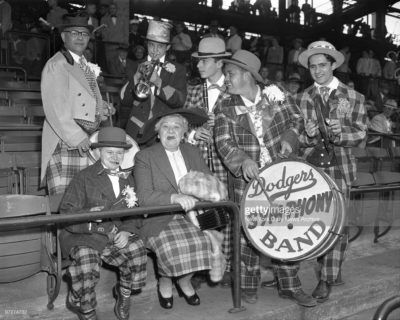
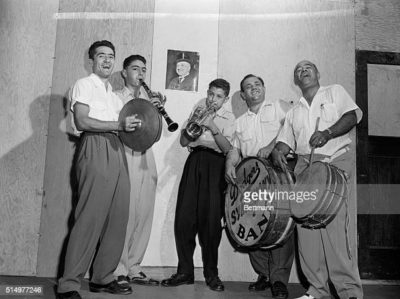
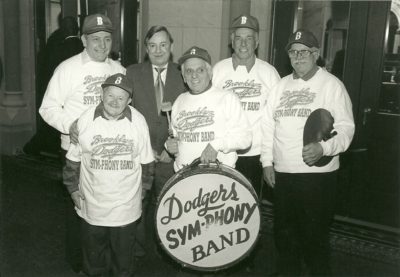
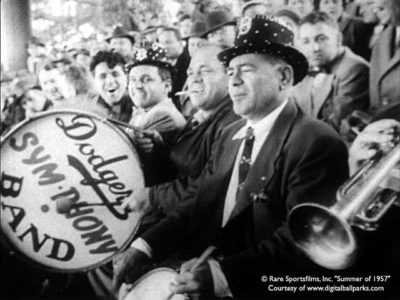
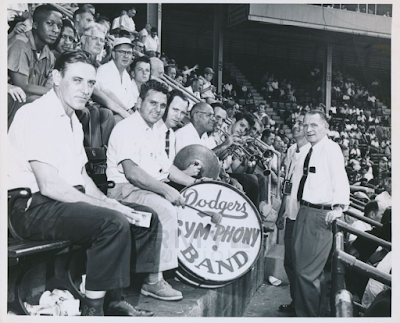
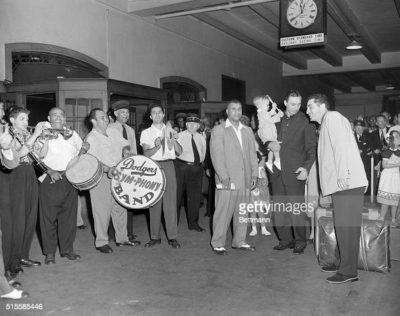
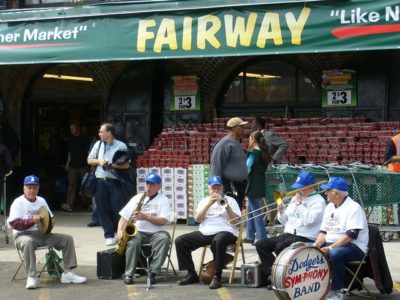
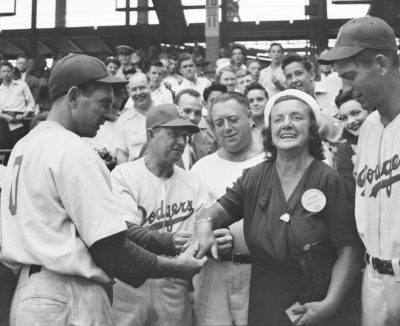
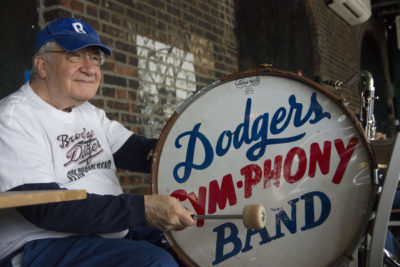
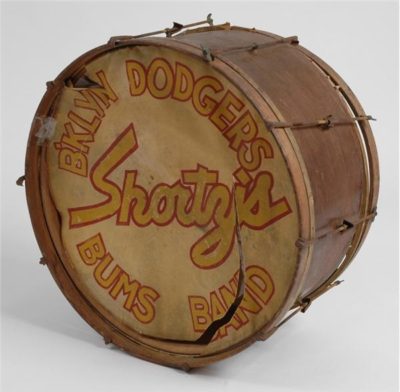
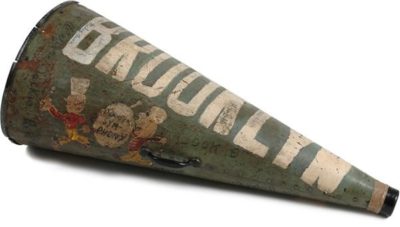
Loved the article and quotes, Gary. Did not know Red Barber named the band.
Rachel Robinson captured the Sym-Phony and Ebbets Field with her wonderful words, “They provided a kind of special character and loving warmth that few other ball parks had.”
The band would serenade opposing players back to the bench, clashing the symbols when they would sit down. Some players would try to fool the Sym-Phony by almost sitting down, then popping up and going to the water cooler. The band was never fooled!
Best, Bill
Sorry Bill…I misread your comment and removed my dumb response. You were giving a nice compliment and I was being a smart ass…didn’t work…I owe you one!
Gary
Hi Bill – Would love to hear your take.
Moving the Dodgers out of Brooklyn has to be one of the most shameful things in the history of MLB. Inducting Walter O’malley into the MLB HOF has to be classified as criminal.
Wayne you are absolutely wrong. O’Malley sincerely wanted to stay in Brooklyn but Robert Moses, the NY state “power broker,” looked down on the franchise and the owner and refused to condemn unimportant properties in the borough, even though O’Malley wanted to use his own money to fund the building of a new ballpark! O’Malley’s struggle to stay in Brooklyn lasted almost 10 years, if not more.
O’Malley was a visionary, a baseball pioneer who enriched our National Pastime and far from what you label him and he does belong in the HOF.
Do the research. Read “Forever Blue” by Michael D’Antonio for a start.
The city of New York offered to build a stadium in Queens for the Dodgers, which they would have leased. O’Malleys response was he would take the stadium in Queens if the city gave him the stadium. The officials of NYC couldn’t see doing that. O’Malley told the mayor of LA after the 1956 World Series that he would move the team to LA for the 1958 season. O’Malley held numerous meetings with the officials of New York in 1957 knowing very well he was going to move the team to LA. He took the 2nd most profitable in MLB to LA. It was simply a land grab on his behalf. He bought the land in LA (where the stadium was built) for $1. The city of LA bribed him with that $1 offer for the land.
Moses was the villain, not O’Malley.
Refer to D’Antonio.
O’Malley was never going to Queens and he would have never leased any ballpark.
And by 1957 the prospect of staying in Brooklyn was zero to none. O’Malley was done negotiating.
Both he and Horace Stoneham (I hope) belong in the Hall. Just my opinion.
Thanks for the dialogue.
If LA would not have bribed O”Malley with the $1 land offer, the Dodgers would have stayed in New York.
Not with Stoneham leaving (Minneapolis was his first choice – he was going) and with Perini’s success in Milwaukee after leaving Boston. O’Malley was not staying in Brooklyn by ’57. Without O’Malley’s proposed site of a domed stadium on the corner of Atlantic & Flatbush (currently the site of the Barclay’s Arena) he would never be able to compete the way he desired.
Moses’ proposal of land in Bedford-Stuyvesant (a dangerous, downtrodden area) and Flushing, Queens (“If the Dodgers go to Queens we are longer the Brooklyn Dodgers.”) were not feasible.
I see we probably won’t agree on this but that’s OK. It’s the beauty of the game’s history.
The Milwaukee Braves were outdrawing the Brooklyn Dodgers but the Dodgers were making more money because of there TV contract. Matter of fact the main reason why the Braves moved to Atlanta was because of a bigger TV contract in Atlanta. Last but not least, I always found it interesting that the City of New York didn’t offer the baseball Giants that same stadium deal in Queens. They just completely ignored the Giants and let them move to San Francisco.If they would have offered that same deal to the Giants the Giants would have probably stayed in NYC>
I totally agree on your Giants point but Stoneham saw great promise in Minneapolis (PARKING!) and that’s where his sights were placed. Plus Stoneham gave absolutely no clue that he was thinking of moving until he made his announcement on August 19, 1957! I kind of believe if Stoneham knew about the Flushing Queens site, the future home of Shea, he would have taken it but then again, O’Malley needed him for another west coast team and that good old rivalry.
Don’t you wish you could have heard their conversations?
Monte convinced me years ago that Moses was the culprit in the Dodger move. Had they stayed, Stoneham might have gotten involved in the Flushing Queens site. But, as Jim said, Horace was probably pushed to the coast by the Brooklyn connection. Though the rivalry, 3000 miles away, was never close to the red hot excitement it generated in NY.
Unlike Brooklyn, the Giants had to do something. After ’54, the club wasn’t the same, attendance was down and the neighborhood was considered unsafe.